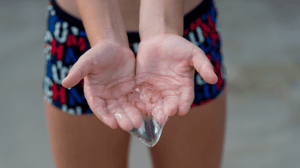A cutting-edge study conducted at the Massachusetts Institute of Technology in Boston. They can be used for pacemakers and for other medical devices, eliminating the problems caused by the metal electrodes currently in use.
Implantable devices are becoming increasingly common, from cochlear implants (for deafness) to pacemakers for the heart, but they also include electrodes for deep-brain stimulation (to help fight a variety of neurological diseases) and microchips for vision.
However, no matter their form, composition or function, they all have one thing in common, metal electrodes, because, until now, no one has ever been able to design an alternative capable of conducting electrical stimuli as efficiently. However, it is those same metals that are often the Achilles heel of these devices, because, over time, they degrade and can encourage the formation of fibrotic tissue and scarring. In addition, it is not unusual for them to cease performing or need to be replaced after a few years.
That is why this new system, conceived by bioengineers from the Massachusetts Institute of Technology (MIT) in Boston, could be an important advance: it is soft, entirely metal-free, inspired by the consistency and versatility of jellyfish, but able to conduct electricity like a metal. What’s more, since it is essentially a gel, it is 3D printable, so the electrodes can be made into incredibly diverse shapes based on specific needs and on the characteristics of the tissue where they are intended to be implanted.
The MIT experiments
As reported in the scientific journal Nature Materials, the researchers began with a specific family of polymers (substances made up of large, repeated molecules), ones that, unlike the vast majority of other polymers—which have insulating properties—are able to conduct electricity.
Even so, using these conductive polymers was not easy, because the early prototypes developed at MIT were too soft and could not ensure satisfactory electrical performance. Later, as they continued to experiment, the bioengineers figured out which factor might make all the difference: they needed a new mixture, one that incorporated a support element, hydrogel (another polymer, capable of absorbing large amounts of water).
Until then, researchers, including from other universities, had tried combining different proportions of conductive polymers and hydrogels, but the mixing had always been random. The engineers at MIT, however, after numerous experiments, found the winning “mix”, which gave them a series of “lattices” with the necessary mechanical robustness, but also with the ability to conduct electricity. To better convey an idea of the structure of these “strands,” they called them electrical or mechanical spaghetti.
Successful first tests
Continuing with the metaphor, they then “cooked” the strands of spaghetti in a 3D printer and implanted them onto the sciatic nerve, heart and spinal cord of animal models, testing their mechanical and electrical performance for up to two months and proving that the soft electrodes remained stable throughout, causing only slight inflammation at the insertion point.
And that's not all. In order to simulate a pacemaker, the ones implanted on the heart were able to relay electrical pulses to the outside, where an external monitor received them, recording cardiac activity; the same was true for the other sites as well, where the electrodes succeeding in recording muscle activity.
Further studies will now be needed, but, meanwhile, a path has been opened to a future where we can create medical devices that are very different and more high-performing compared to the ones we know today.




